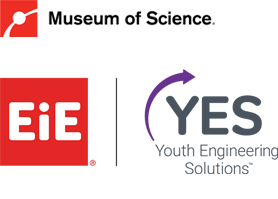YES Elementary Units
YES Elementary Units
YES Elementary Resources
YES works closely with teachers to develop a suite of resources for each unit. These include:
| Resource | Description |
|---|---|
| Teacher Guide | Contains nine 45-minute lessons with a common structure:
|
| Story or Comic | Introduces the engineering problem students will solve.
|
| Engineering Notebook | Records students’ observations, sketches, plans, and reflections. |
| Print Materials | Include print materials for group activities such as cards or signs. |
| Slides | Facilitate classroom projection of guiding questions, discussion prompts, sentence frames, and images. |
| Vocabulary Cards | Introduce new vocabulary through visual cards that can be posted on an engineering vocabulary wall. |
| Assessment Tools | Include opportunities and rubrics to evaluate students’ engineering growth. |
| Family Resources | Spur conversations about engineering at home and connect students’ learning to their communities. |
| Optional Resources | Provide:
|
| Video Playlist | Shows how to prepare and test materials. |
| Materials Kit | Supplies the physical materials needed to teach each lesson. |
